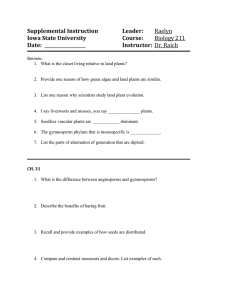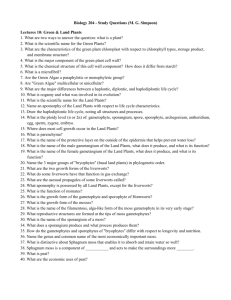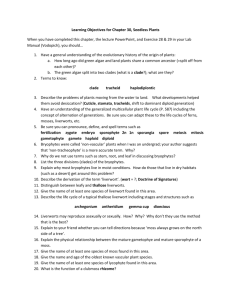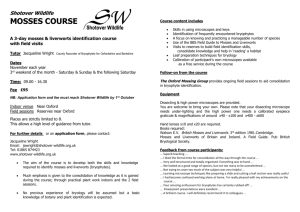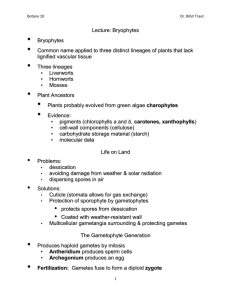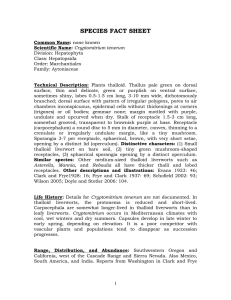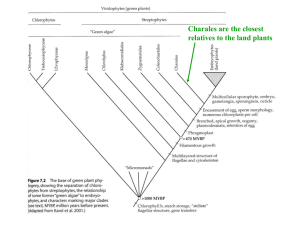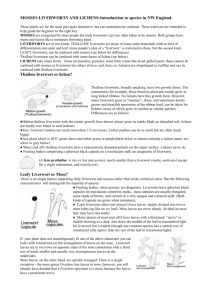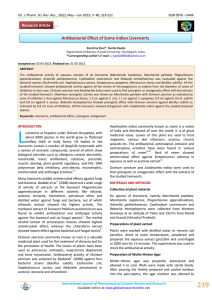Kasey Hartz Natural Area Reference Sheet Hepatophyta Liverworts
advertisement
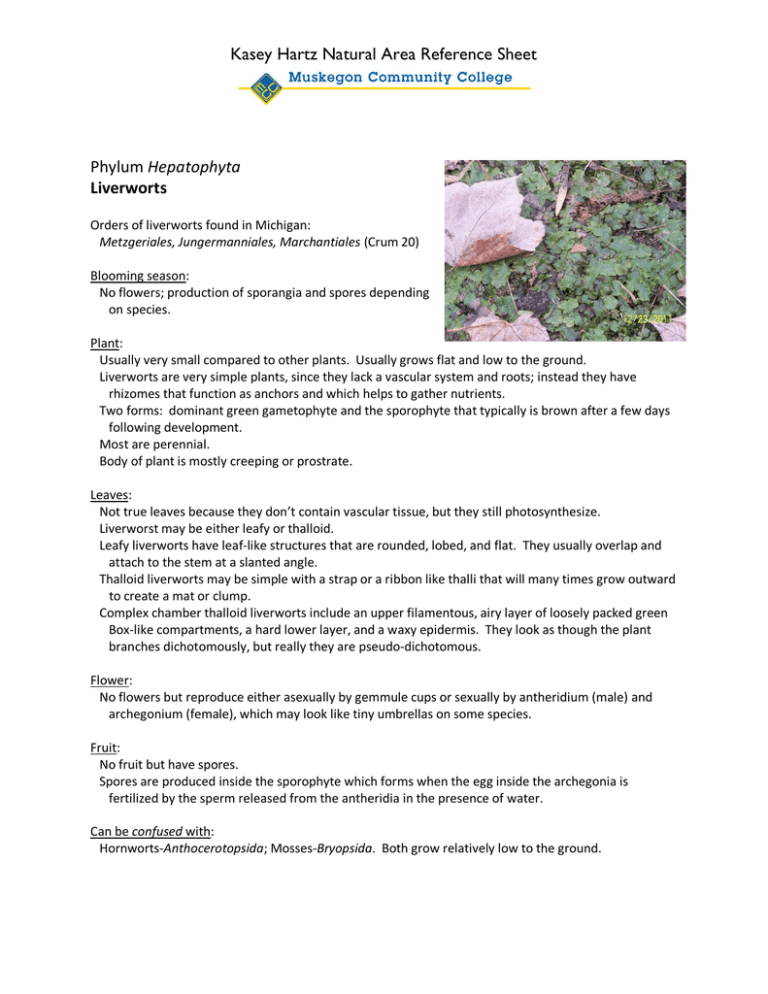
Kasey Hartz Natural Area Reference Sheet Phylum Hepatophyta Liverworts Orders of liverworts found in Michigan: Metzgeriales, Jungermanniales, Marchantiales (Crum 20) Blooming season: No flowers; production of sporangia and spores depending on species. Plant: Usually very small compared to other plants. Usually grows flat and low to the ground. Liverworts are very simple plants, since they lack a vascular system and roots; instead they have rhizomes that function as anchors and which helps to gather nutrients. Two forms: dominant green gametophyte and the sporophyte that typically is brown after a few days following development. Most are perennial. Body of plant is mostly creeping or prostrate. Leaves: Not true leaves because they don’t contain vascular tissue, but they still photosynthesize. Liverworst may be either leafy or thalloid. Leafy liverworts have leaf-like structures that are rounded, lobed, and flat. They usually overlap and attach to the stem at a slanted angle. Thalloid liverworts may be simple with a strap or a ribbon like thalli that will many times grow outward to create a mat or clump. Complex chamber thalloid liverworts include an upper filamentous, airy layer of loosely packed green Box-like compartments, a hard lower layer, and a waxy epidermis. They look as though the plant branches dichotomously, but really they are pseudo-dichotomous. Flower: No flowers but reproduce either asexually by gemmule cups or sexually by antheridium (male) and archegonium (female), which may look like tiny umbrellas on some species. Fruit: No fruit but have spores. Spores are produced inside the sporophyte which forms when the egg inside the archegonia is fertilized by the sperm released from the antheridia in the presence of water. Can be confused with: Hornworts-Anthocerotopsida; Mosses-Bryopsida. Both grow relatively low to the ground. Kasey Hartz Natural Area Reference Sheet Phylum Hepatophyta Liverworts 2 Geographic range: Type specimen location: Creek Bed Habitat State: 75 species in 44 genera found across Michigan (Crum 9). Regional: Many species found in Michigan may be found in Wisconsin, Ohio, Minnesota, and Indiana (Crum 10). Habitat: Local: Habitats conditioned by other plants; sheltered microhabitats where there is less competition from plants with larger roots. Found on moist shaded logs, stumps, trunks, tree bases, dark holes under buttress roots, on humus, around springs, seasonally flooded holes, banks of soil, creek banks, ravines, wetlands, hardwood swamps, river bottoms, woodlands, edges of lakes or ponds, fallow fields, and rock outcrops (Crum 9). Regional: Similar to local. In general prefer sunny to moist, shady places. Some species are aquatic. Common local companions: Moses (Bryopsida) Usages: Human: Some species are used in traditional medicinal methods; in China Conocephalum conicim is used to treat cuts and sores (Glime 58). Various species produce substances that deter microorganisms, insects, and other animals so there is future possibility for use in pesticides; Frullania bolanderi causes allergic reactions in some humans that include itchy skin (Glime 84). Some species are used in household construction or as packing material in a number of third world countries. They are also grown in horticulture for ornamental uses. Liverworts are important biological indicators; many species have specific requirements for survival (“Uses of Bryophytes”). Arigmonia eupatoria Linn, was used by country people in North America as a sort of medicinal tea (Hendrick 28). Various species were also used by the Native Americas as cures for illness (Vogel 57). Other Animal: Some species are eaten by insects and slugs, but most are avoided as a food source. Why is it called that?: Hepatophyta refers to the liver shape of the leaves; meaning liver plant (Gledhill). Prepared by: Elizabeth LaRue April 2008
